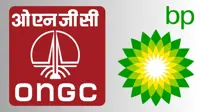Survey suggests a medium-term shift to capital-intensive manufacturing
09 Jul 2014
Indian industry has immense potential for further strengthening the agro-processing, textiles and garments, and leather and footwear sectors with good prospects for sustained employment generation.
But the medium-term challenge for Indian manufacturing is to move from lower to higher-tech sectors, from lower to higher value added sectors, and from lower to higher productivity sectors, says Economic Survey 2013-14.
Medium-tech industries are primarily capital intensive and resource processing and high-tech industries are mainly capital and technology intensive.
In order to push the share of manufacturing in overall GDP to the projected 25 per cent, Indian manufacturing need to capture the global market in sectors showing a rising trend in demand.
These sectors are largely high technology and capital intensive. Such high-tech industries may perform a less important role in sustaining employment but are critical for capital accumulation and skills development and for improving the knowledge base, the survey notes.
To gain a firm footing in these sectors, the policy thrust should be on pushing up the level of public and private expenditure on technology upgradation, research and development, innovation, and skill development, it adds.
Core sector and infrastructure show mixed trend
The Economic Survey 2013-14 calls for enhanced infrastructure investment besides improving productivity and removing procedural bottlenecks.
Sector-wise performance of core industries and infrastructure services during 2013-14 showed a mixed trend. While the growth in production of power and fertilisers was comparatively higher than in 2012-13, coal, steel, cement, and refinery production posted comparatively lower growth.
Production of crude oil and natural gas declined during 2013-14.
Among infrastructure services, growth in freight traffic by railways and cargo handled by major ports and the civil aviation sector (except import cargo) has been comparatively higher during 2013-14.
In the road sector, the National Highways Authority of India (NHAI) posted negative growth of 33 per cent during 2013-14 compared to the 26.5 per cent growth during 2012-13, says the survey.
On energy production, the Survey mentions that even though domestic production of energy is projected to increase, import dependence will continue to be high, particularly for crude oil where nearly 78 per cent of the demand will have to be met from imports by the end of the Twelfth Plan.
As per the Survey, the growth in power generation during 2013-14 (April-March) was 6.0 per cent, compared to 4.0 per cent during April 2012 to March 2013.
The capacity-addition target for the Twelfth Plan period is estimated at 88,537 MW. Against this target, 38,583 MW capacity has been added till April 2014, which constitutes 43.6 per cent of the target envisaged in the Twelfth Plan.
The individual targets achieved by the centre, states, and private sector during this period are 30.5 per cent, 47. 2 per cent, and 49.7 per cent, respectively, says the Survey.
Coal production in the first two years of the Twelfth Plan has been subdued with domestic production at 556 million tonnes in 2012-13 and 566 million tonnes in 2013-14. Overall domestic demand for coal during these two years was in the range of 715-720 million tonnes.
Demand was mainly driven by the power generation sector, whereas demand in the iron and steel and cement sectors had moderate growth rates.
To fill the gap between domestic demand and supply, the country imported about 146 million tonnes during 2012-13 and about 169 million tonnes of coal during April-January 2013-14 (provisional). The survey notes that the overall long term demand for coal in India is closely linked to the performance of the main end-use sectors, ie, thermal power, iron and steel and cement.
A sharp deceleration in the production of natural gas in the past two-three years has further increased the energy sector's dependence on coal.
In the road sector, the survey states that a total length of 21,787 km of national highways has been completed till March 2014, under various phases of the NHDP. In spite of several constraints due to the economic downturn, the NHAI constructed 2,844 km length in 2012-13, its highest ever annual achievement. During 2013-14 a total of 1,901 km of road construction was completed, adds the survey.
Regarding telecom sector, the survey reports phenomenal growth during the past few years, which has become the second largest telephone network in the world, next only to China.
The survey observes that a series of reform measures by the government, innovations in the wireless technology, and active participation by the private sector played an important role in the growth of this sector. The survey suggests that policy for better spectrum management through trading and sharing needs to be looked into so as to bring down the cost of spectrum.
''There is need for better and more effective coordination amongst various central ministries / institutions regarding integration of environmental concerns at the inception / planning stage of a project,'' the survey says, adding that rapid economic growth in recent years has put enormous pressure on existing infrastructure, particularly in transport, energy and communications.
It observes unless it is significantly improved, infrastructure will continue to be a bottleneck for growth and an obstacle to poverty reduction.
Giving details of financing infrastructure, the survey states that the latest available data on gross deployment of bank credit to major infrastructure sectors shows that the rate of growth of bank credit moderated from an average of 44.8 per cent in 2011-12 to 17.7 per cent in 2013-14.
The power sector had an over 50 per cent share in total credit flow to infrastructure. Both in terms of share in total credit to infrastructure and rate of growth, the telecom sector witnessed consecutive decline in the last three years. The government has put in place a liberal FDI policy, under which FDI up to 100 per cent is permitted under the automatic route in most sectors / activities. As a result, total FDI inflows into major infrastructure sectors registered a growth of 22.8 per cent in 2013-14 as compared to the contraction of 60.9 per cent during 2012-13, the survey adds.
From the infrastructure development perspective, the survey states that while important issues like delays in regulatory approvals, problems in land acquisition and rehabilitation, environmental clearances, etc, need immediate attention, time overruns in the implementation of projects continue to be one of the main reasons for underachievement in many of the infrastructure sectors.
In order to accelerate coal production in the short term, the survey suggests the need to focus on building critical feeder railway routes for coal for evacuation and movement of coal. Clearing pending environment and forest clearances and rehabilitation issues that have stalled coal production by private captive blocks and Coal India Limited (CIL) subsidiaries also need to be accorded top priority.
The CIL encompasses the whole gamut of identification of coal reserves and detailed exploration followed by design and implementation and optimizing operations for coal extraction in its mines. The process of restructuring CIL needs to be pushed through swiftly to boost coal production, the survey adds.
The issue of long-term finance for infrastructure projects, the survey says, needed to be addressed in the context of the limitation of banks to finance such projects. Infrastructure projects, given their long pay-back period, require long-term financing in order to be sustainable and cost effective. A robust and transparent issuance and trading process, uniform stamp duty across states and a well-devised credit enhancement mechanism are some of the issues which need immediate attention for development of the fixed instrument market in India, the Survey adds.
Service sector posts 9% CAGR
India has the second fastest growing services sector with a compound annual growth rate of 9.0 per cent during 2001 to 2012. India also ranked 12th in terms of service sector GDP in 2012 among the world's top 15 countries. While the share of service sector was 65.9 per cent in world GDP and 44 per cent in global employment in 2012, in India, they were 56.9 per cent and 28.1 per cent, respectively.
Services had a 57 per cent share in GDP at factor cost (at current prices) in 2013-14, an increase of 6 percentage points over 2000-01. Despite deceleration, services GDP growth at 6.8 per cent was above the 4.7 per cent overall GDP in 2013-14. The growth rate of the combined category of trade, hotels, restaurants, transport, storage, and communications decelerated to 3.0 per cent while financing, insurance, real estate, and business services grew robustly at 12.9 per cent.
In 2013-14, FDI inflows to the services sector (top five sectors, including construction, declined sharply by 37.6 per cent to $6.4 billion compared to an overall growth in FDI inflows at 6.1 per cent, resulting in the share of the top five services in total FDI falling to nearly one-sixth.
The increase in India's share in world services exports from 0.6 per cent in 1990 to 3.3 per cent in 2013 was faster than the growth in merchandise exports. Exports of software services, accounting for 46 per cent of India's total services exports, decelerated to 5.4 per cent in 2013-14, travel, accounting for a nearly 12 per cent share, witnessed negative growth of 0.4 per cent.
.webp)



.webp)


.webp)

























